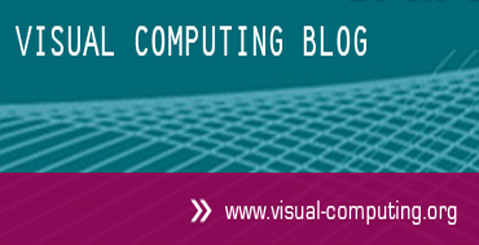Collaborative Research Center
SFB-TRR 161
Quantitative Methods for Visual Computing
We are living in a data society in which data is generated at amazing speed; individuals, companies, organizations, and governments are on the brink of being drawn into a massive deluge of data. The great challenge is to extract the relevant information from vast amounts of data and communicate it effectively.
Typical scenarios include decision and policy making for urban and environmental planning or understanding relationships and dependencies in complex networks, e.g., social networks or networks from the field of bioinformatics. These scenarios are not only of interest to specialized experts; in fact, there is a trend toward including the broad public, which requires the information to be presented in a reliable, faithful, and easy-to-understand fashion.
Visual computing can play a key role in extracting and presenting the relevant information.
In visual computing research the aspect of quantification is often neglected. The SFB-TRR 161 seeks to close this gap.
The long-term goal is to strengthen the research field by establishing the paradigm of quantitative science in visual computing.
News
December 2025
Airbus-Forschungspreis "Claude Dornier" for Sabrina Jaeger-Honz
Postdoctoral researcher in Project D04 wins award for her dissertation.
» more »
The Avatar in a Wheelchair: A Call for More Diversity in the Metaverse
New study with participation of members from Project A08 investigates effects of avatars that reflect users' real-life disabilities.
» more »
November
SFB-TRR 161 Project Leader Miriam Butt Successful with Application for New Collaborative Research Center
SFB 1760 will study the influence of silence and noise in the use and understanding of language
» more »
SFB-TRR 161 Events
Jan 12th, 2026, 4 pm - 6 pm
Location tba
Lecture | Title tba
Held by:
tba
Abstract:
tba
Bio:
tba
Location:
tba
Jan 19th, 2026, 4 pm - 6 pm
University of Konstanz
Lecture | Title tba
Held by:
Jakub Lokoč, Charles University, Prague, Czech Republic
Abstract:
tba
Bio:
tba
Location:
University of Konstanz, Room ZT 702.
University of Stuttgart: The lecture will be transmitted to VISUS, room 00.012
The talks are available via Zoom.
Meeting ID:
Passcode:
For participants via Zoom: The transmission will kindly be managed by Dimitar Garkov. He will be on site and monitor/manage the Zoom-Session incl. Q&A during and after the talk as well. Please do not hesitate to get in touch with Dimitar in case of questions or problems regarding the transmission/your online participation: dimitar.garkov@uni-konstanz.de
Jan 26th, 2026, 4 pm - 6 pm
LMU Munich
Lecture | Title tba
Held by:
Joanna Bergström, University of Copenhagen, Denmark
Abstract:
tba
Bio:
tba
Location:
tba
Feb 2nd, 2026, 4 pm - 6 pm
University of Stuttgart
Lecture | Title tba
Held by:
Michael Doggett, Lund University, Sweden
Abstract:
tba
Bio:
tba
Location:
tba
Mar 12th - 13st, 2026
University of Konstanz, Room ZT 1204 (Data Theatre)
Hackathon DR4ET
Organized by:
Patrick Paetzold, Michael Stroh, Ying Zhang
Proposal Submission:
Given the success of past Hackathons, we encourage you to submit a proposal to recruit talented individuals for your project at this year’s event. Please email your PDF to Ying Zhang.
Proposal Deadline: Dec 1st, 2025.
Once we've collected all the proposals and given the authors their feedback, you'll be asked to vote on a topic to get involved.
Location:
University of Konstanz, Room ZT 1204 (Data Theatre)
Jun 16th - 17th, 2026, full days
Internal Status Seminar of the SFB-TRR 161
Further Information & Resources
YouTube
The SFB-TRR 161 produces videos to give insights into the projects and the ongoing research. Please visit our YouTube Channel.
Graduate School

PhD students of the projects at the Universities of Stuttgart and Konstanz learn and do research together on their way to their doctoral degree in visual computing.
Visual Computing Blog

The scientists of the SFB-TRR 161 as well as guest authors blog about their activities in computer graphics, visualization, computer vision, augmented reality, human-computer interaction, and psychology.
Partners of the SFB-TRR 161
FOR SCIENTISTS
Projects
People
Publications
Graduate School
Equal Opportunity
FOR PUPILS
PRESS AND MEDIA
© SFB-TRR 161 | Quantitative Methods for Visual Computing | 2019.





















